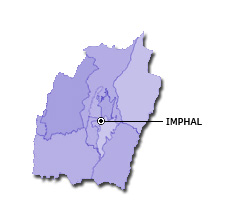
Manipur (IMPHAL)
| Particulars | Description |
|---|---|
 Area Area |
22,327 sq. km |
 Population Population |
27,21,756 * |
 Capital Capital |
Imphal |
 Principal Languages Principal Languages |
Manipuri |
History and Geography
Manipur has a long and glorious history from the beginning of the Christian era. The recorded history of kingship started from 33 A.D., which marked the coronation of Pakhangba. After Pakhangba, a series of kings ruled over the kingdom of Manipur. The independence and sovereignty of Manipur remained uninterrupted until the Burmese invaded and occupied it for seven years in the first quarter of the 19th century (1819-25). Then came British Paramountcy in 1891, and later on it was merged in the Indian Union as part “C” State on 15 October, 1949. This was replaced by a Territorial Council of 30 elected and 2 nominated members. Later in 1963, a Legislative Assembly of 30 elected and 3 nominated members was established under the Union Territories Act, 1962. The status of the administrator was raised from Chief Commissioner to the status of the Lt. Governor with effect from 19 December, 1969. Manipur attained full-fledged statehood on 21 January, 1972. With this, a Legislative Assembly consisting of 60 elected members was established.
Manipur is situated on the eastern frontier of India. It is bounded on the east by Myammar (Burma), on the north by the State of Nagaland, on the west by the State of Assam and on the south by the State of Mizoram and Myanmar. Manipur lies between 23.830 N and 25.680 N latitude and between 93.030 E and 94.780 E longitude. It has an area of 22,327 sq. kms. Physically Manipur comprises of two parts, the hills and the valley. The valley is at the centre surrounded by hills on all sides. The hills cover about 9/10 of the total area of the State. Manipur Valley is about 790 metres above the sea level. The hill ranges are higher on the north and gradually diminish in height as they reach the southern part of Manipur. The valley itself slopes down towards the south.
Agriculture
Agriculture and allied activities is the only mainstay of the State’s economy where about 70 percent of the population depends on it. The State has two topographical zones – valley and hills. The valley is known as the ‘Rice Bowl’ of the State. The valley has sub-tropical to sub-temperate climate with an average altitude of 3000 metres above MSL. The State has distinct winter, warm, humid and rainy summer. The average rainfall covering the State is 1436 mm. It occurs mainly during June to September when the State is under the spell of South West Monsoon. The growth of the agriculture in the State has been quite uneven and unsatisfactory for the reason that its production still depends on seasonal rainfall.
Forest
According to the State Forest Report, 2009 prepared by Forest Survey of India, Dehradun, the forest cover in the State is 17,280 sq km, which is 77.40 per cent of the State’s geographical area. In terms of forest canopy density classes, the State has 701 sq km very dense forests, 5474 sq km moderately dense forest and 11.105 sq km open forests. Comparison of the current forest cover with the previous assessment in 2005 shows and overall increase in forest cover of 328 sq km. This overall increase in forest cover is mainly due to regeneration in abandoned jhum areas.
Irrigation
Major and Medium Irrigation had been introduced in the State from 1980. So far 8 (eight) Major and Medium Irrigation & Multipurpose Projects have been taken up, of which 5 (five) projects viz. Loktak Lift Irrigation Project, Khoupum Dam Project, Imphal Barrage Project, Sekmai Barrage Project and Singda Multipurpose Project were completed by the end of 8th Plan. By the end of Eight Plan period, only about 67,546 ha. has been brought under irrigation of which major and medium irrigation projects contributed 28, 150 ha. and Minor Irrigation contributed 39,396 ha. projects contributed 28,150 ha. and Minor Irrigation contributed 39,396.
Commerce and Industries
The handloom industry is by far the largest and most important cottage industry in Manipur. As per National Handloom Census, 1995-96 report conducted by the National Council for Applied Economic Research, New Delhi, Manipur has 4.62 lakh handloom workers which is 2nd position among the States , 2.81 lakh looms which is 4th position, consuming 12.196 lakh kg of yarn per month which is 7th among States in the country.
Power
Power supply in Manipur is fully dependent on the Central Generating Stations situated in the North Eastern Region (NER). Peak demands for night and day are of the order of 150 & 100 MW in summer and 170 & 110 MW in winter. As the generating stations in the NER are mainly of hydel in nature, during lean period there is a shortfall in generation and therefore the available share of Manipur reduces drastically.
Art and Culture
Its own art-forms and cultural expressions and ramifications distinctly showcase Manipur to the world. Its famous classical dance remains unique in all Manipuri dance-forms whether it is folk, classical or modern and has different style and gesture of movement.
Transport
Roads: Road transport is the only means of communication for development of the State as there are no inland Waterways, Railways, or Ropeways. All development activities depend entirely on the road transport facilities.
The total length of roads in Manipur by 2009 including National Highways, NEC, BRTF and Road under Rural Development, was 2618 km. Out of the total road length, the surfaced length in 5443 km.
3 National Highways – i) NH – 39, ii) NH – 53 an iii) NH – 150 criss-cross the State connecting all districts. Imphal, the capital of Manipur is joined by NH-39 with Nagaland on the North and Myanmar on the east, on the west with Assam by NH-53 and Mizoram on the south by NH-150.
Aviation: Imphal Airport is the second largest airport in the North Eastern Region Imphal is connected to Aizwal, Guwahati, Kolkata, Silchar Bangaluru and New Delhi by Air India, JetLite, Indigo.
Railways: The State is included in the railway map of India with opening of a rail head at Jiribam in May, 1990. It is 225 km from Imphal, Dimapur (Nagaland), 215 kms from Imphal is the nearest rail-head.
The Jiribam: Tupul Railway line has been declared as a National Project. The final location survey of 52 kms has been completed. Lan acquisition in first 10 kms is in advance stage. During feasibility study, it has been found feasible to extend the line from Tupul to Imphal.
Festivals
A year in Manipur represents a cycle of festivities. Hardly a month passes by without a festival. Important festivals of the State are: Dol-jatra, Lai Haraoba, Rasa Leela, Cheiraoba, Ningol Chakouba, Rath-Jatra, Id-ul-Fitr, Imoinu Iratpa, Gaan-Ngai, Lui-Ngai-ni, Id-ul-Zuha, Yaoshang (Holi), Durga Puja, Mera Houchongba, Diwali, Kut and Christmas, etc.
Tourist Centres
Manipur is not only the gateway of the North Eastern region but is also a fascinating destination for discerning tourists. Blessed with a salubrious climate and landscapes languishing in natural beauty and scenic splendour, the state extends to the tourists a warm welcome. Some important tourist centres in Manipur are: Shree Govindajee temple, Khwairamband Bazar (Ima Keithel), War cemeteries, Shaheed Minar, Nupi Lan (Women’s War) Memorial Complex, Khonghampat Orchidarium, INA Memorial (Moirang), Loktak Lake, Keibul Lamjao National Park, Bishnu Temple at Bishnupur, Sendra, Moreh, Siroy Village, Siroy Hills, Dzuko Valley, State Museum, Kaina Tourist Home, Khongjom War Memorial Complex, India Peace Memorial (Red Hill) etc.
* As per 2011 Census (Provisional Data)
Courtesy :https://knowindia.gov.in/
Know Major Facts About Indian States, Know your State, Learn about Your State, Indian Culture & Traditions , Places to visit in India, How well do you know your Indian states, Know major cities and towns in India



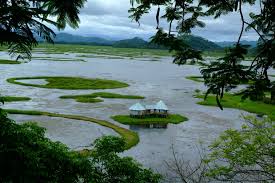
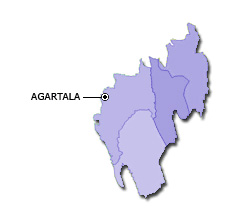
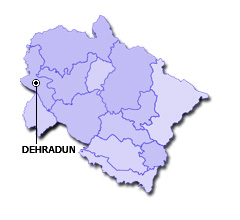
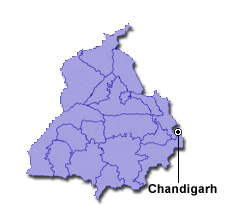
Leave a Reply
You must be logged in to post a comment.